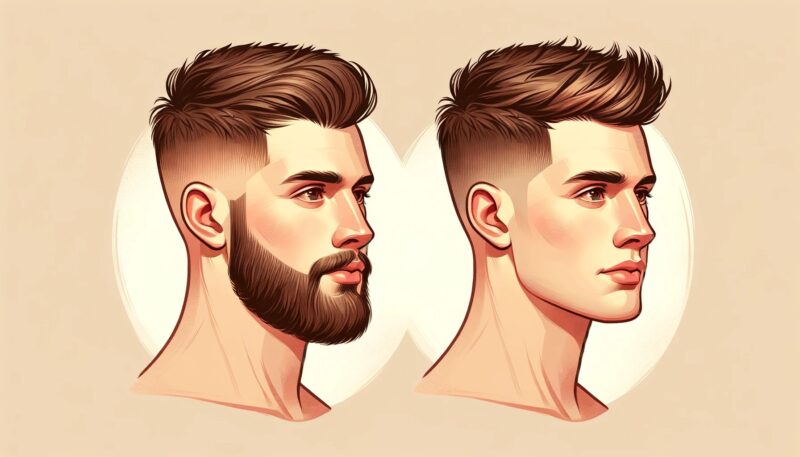When it comes to men’s hairstyles, the fade haircut has stood as a pillar of style and sophistication. Within this world, the low fade and high fade haircuts are particularly popular, each offering a unique aesthetic.
Today, I will walk you through the details of these two styles, comparing their characteristics, maintenance requirements, suitability for different face shapes, and styling considerations.
Key Takeaways
- Low Fade vs High Fade: Low fades start above the ear for a subtle look, while high fades begin near the temples for a bolder statement.
- Maintenance and Styling: Low fades require less maintenance and minimal styling products, whereas high fades need more frequent barber visits and a variety of styling products.
- Face Shape Consideration: Low fades suit square faces by accentuating cheekbones, while high fades are ideal for round faces, adding symmetry.
- Hair Type Adaptability: Both fades can be adapted to different hair types, with high fades being particularly suitable for thick or curly hair.
- Personal Style and Lifestyle: Your choice between a low and high fade should reflect your personal style and consider your lifestyle, especially in terms of maintenance and styling time.
What Are Low Fade and High Fade Haircuts?
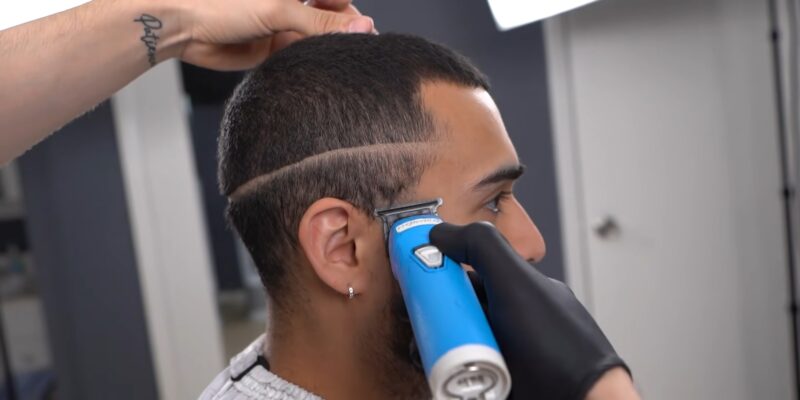
Low Fade Haircut
The low fade haircut is characterized by a shorter fade line, starting just above the ear. This style transitions smoothly through the hairline, subtly blending into the longer hair on top.
It’s a versatile choice that suits a variety of face shapes and lifestyles, requiring less daily maintenance compared to more dramatic cuts.
Key Features
- Fade line starts just above the ear.
- Smooth transition through the hairline.
- Less maintenance required.
High Fade Haircut
In contrast, the high fade haircut begins around the temples or forehead, creating a bolder and more dramatic look. This style offers more volume on top, allowing for a wider range of styling options.
It’s perfect for those who desire a standout hairstyle and are willing to invest more time in styling and maintenance.
Key Features
- Fade line starts around the temples or forehead.
- Offers more volume on top.
- Requires more styling and maintenance.
Low Fade and High Fade: A Comparative Overview
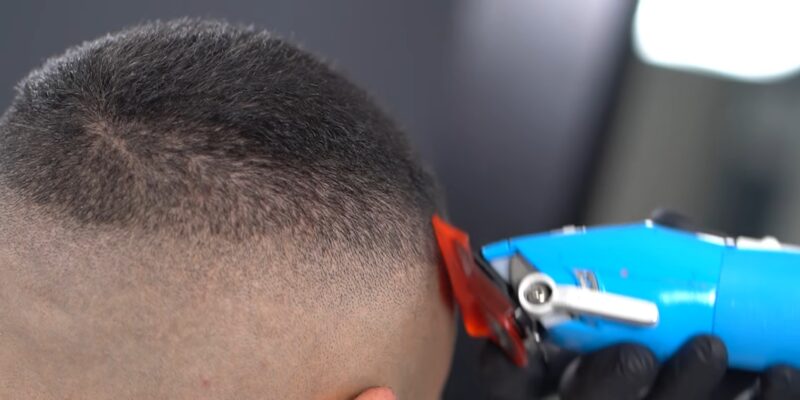
| Feature | Low Fade | High Fade |
| Starting Point | Just above the ear | Around the temples or forehead |
| Maintenance | Less frequent | More frequent |
| Styling | Minimal products | Variety of products |
| Suitability | Square faces, professional settings | Round faces, bold personalities |
| Hair Type | Versatile, especially for finer hair | Better for thick or curly hair |
A Detailed Comparison
1. Visual Impact
- Low Fade: Offers a more understated, classic look.
- High Fade: Creates a striking, modern appearance.
2. Maintenance and Upkeep
- Low Fade: Requires less frequent barber visits and minimal styling products.
- High Fade: Demands regular barber visits and a good investment in styling products like pomades and pastes.
3. Suitability for Face Shapes
- Low Fade: Accentuates cheekbones, ideal for square faces.
- High Fade: Adds symmetry, particularly flattering for round faces.
4. Styling Flexibility
- Low Fade: Provides a clean, professional look with less room for variation.
- High Fade: Offers a canvas for creative styling, suitable for those who enjoy experimenting with their look.
How Do I Choose Between These Two?
Consider Your Lifestyle
Reflect on your daily routine and how much time you’re willing to dedicate to hair maintenance. A low fade is more low-maintenance, while a high fade requires regular styling and upkeep.
Assess Your Face Shape
- Round Faces: Benefit from the added height and structure of a high fade.
- Square Faces: Are complemented by the subtle graduation of a low fade.
Personal Style
Your personal style is a crucial factor. If you prefer a more conservative, understated look, opt for a low fade. For a bold, trendy appearance, a high fade is your go-to choice.
What Are Some Other Fade Options?
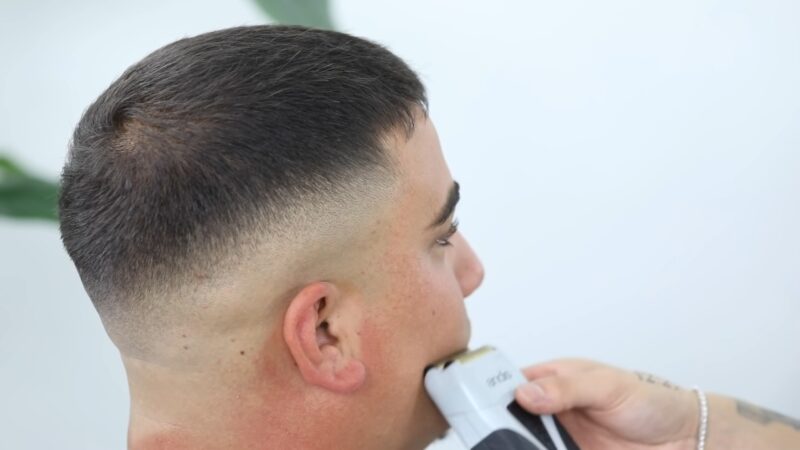
Mid Fade: The Best of Both Worlds
Situated between the low and high fade, the mid fade starts above the ear but below the temples. It’s a great compromise for those who can’t decide between the subtlety of a low fade and the boldness of a high fade.
Taper Fade: A Gentle Transition
A taper fade is ideal for those considering a significant hair change without committing to a full buzz cut. It involves a gradual decrease in hair length, offering a softer version of the traditional fade.
Maintenance Tips for Fade Haircuts
Regular Barber Visits
To maintain the sharp, clean look of a fade, regular visits to the barber are essential. This ensures the fade remains fresh and the hair length on top is well-groomed.
Hair Care Essentials
- Shampoo and Conditioner: Essential for keeping the scalp healthy and hair in good condition.
- Styling Products: Pomades and pastes are recommended for high fades, while low fades require less product.
Home Styling Techniques
Invest in a good quality hairdryer and learn basic styling techniques to keep your fade looking its best between barber visits.
Which Fade is Right for You?
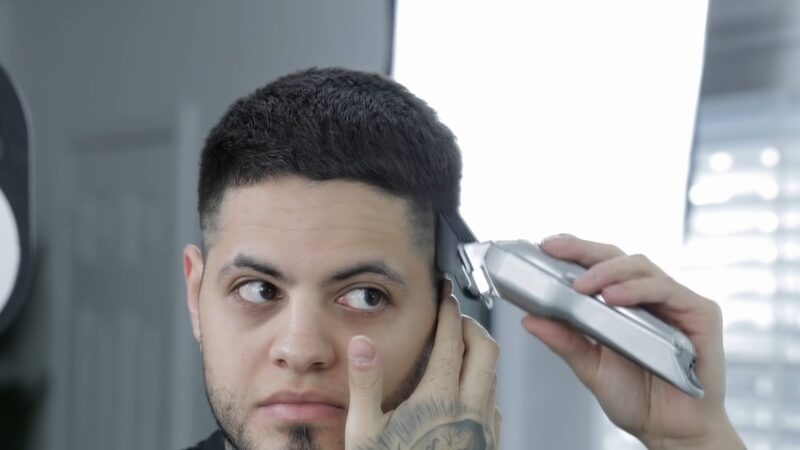
When deciding between a low fade and a high fade, consider the image you wish to project. If you lean towards a subtle, refined look that meshes seamlessly with both professional and casual environments, the low fade is your ally.
It whispers elegance without screaming for attention. On the other hand, if you’re someone who embraces boldness and likes to make a statement, the high fade is your canvas, allowing for more expressive and varied hairstyles.
The Role of Hair Texture and Type
Your hair’s texture and type also play a significant role in determining the most suitable fade. Curly or thick hair might fare better with a high fade, as it provides more room on top to manage and style the volume.
Conversely, straight or finer hair might benefit from the sleek, clean lines of a low fade.
FAQs
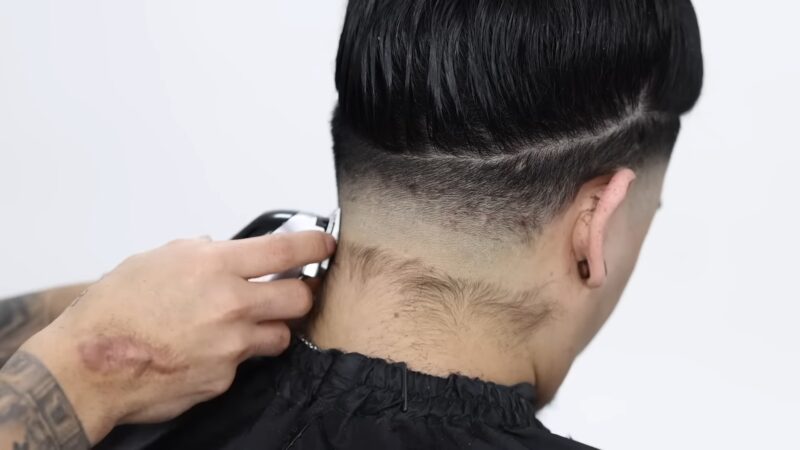
Can low or high fades work with long hair?
Yes, both low and high fades can be adapted to longer hair on top. The key is the gradient of the fade itself, not the length of the hair being blended into.
Are fade haircuts suitable for all ages?
Absolutely! Fade haircuts are versatile and can be tailored to suit individuals of any age, offering a stylish and modern look that transcends generations.
How long does a fade haircut typically last before needing a touch-up?
A fade haircut generally lasts about 2 to 3 weeks before needing a touch-up, depending on the speed of your hair growth and the sharpness of the fade you desire.
Can I achieve a fade haircut at home?
While it’s possible to attempt a fade haircut at home, it’s challenging to achieve the professional, blended look without the skills and tools of a barber.
Are fade haircuts more expensive than regular haircuts?
Fade haircuts might be slightly more expensive than standard haircuts due to the skill and precision required, but this can vary depending on the barbershop.
Is it possible to have a fade with curly hair?
Yes, fades can be done on curly hair. In fact, fades can help manage and accentuate curls, especially with a high fade that leaves more length on top.
Final Words
Choosing between a low fade and a high fade haircut comes down to personal preference, lifestyle, and face shape. Both styles offer distinct advantages and cater to different aesthetic preferences.
Whether you opt for the subtle elegance of a low fade or the bold statement of a high fade, ensure that your choice aligns with your personal style and maintenance preferences. With regular upkeep and the right styling products, either of these haircuts can enhance your appearance and boost your confidence.
Keep in mind that the perfect haircut is not just about following trends but about finding a style that resonates with your personality and lifestyle. So, take the plunge, choose a fade that suits you best, and step out in style!
